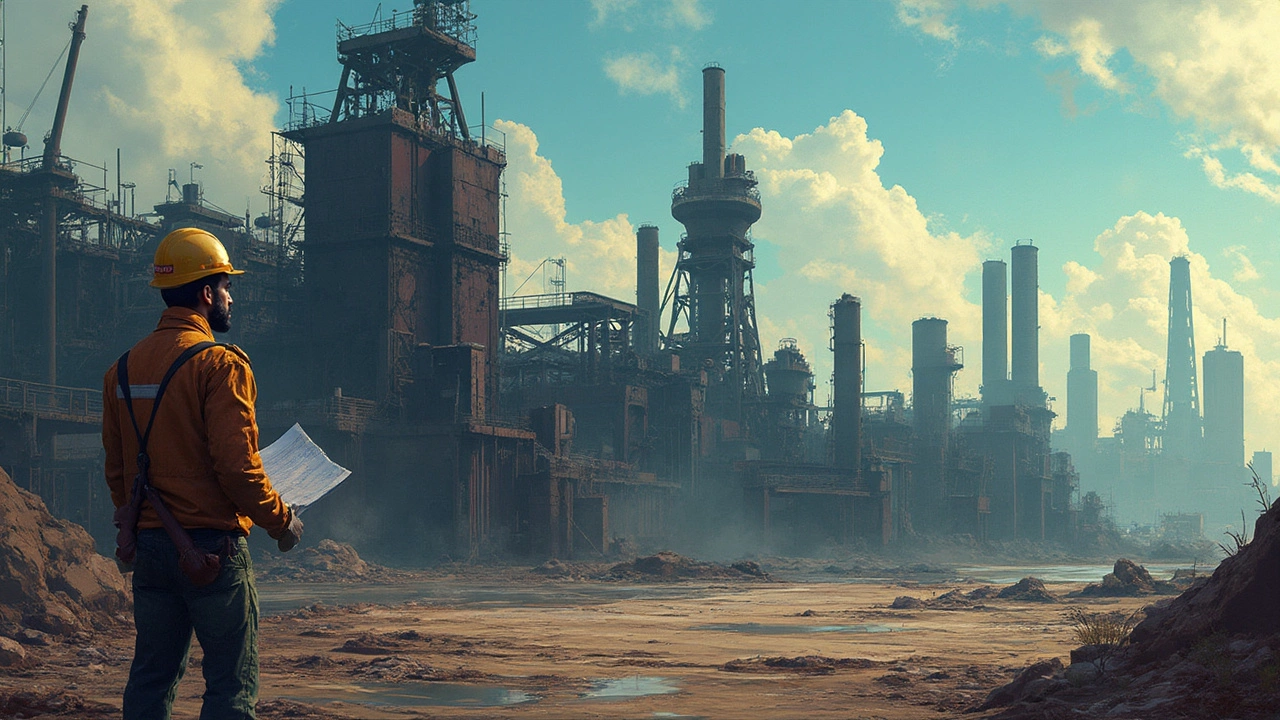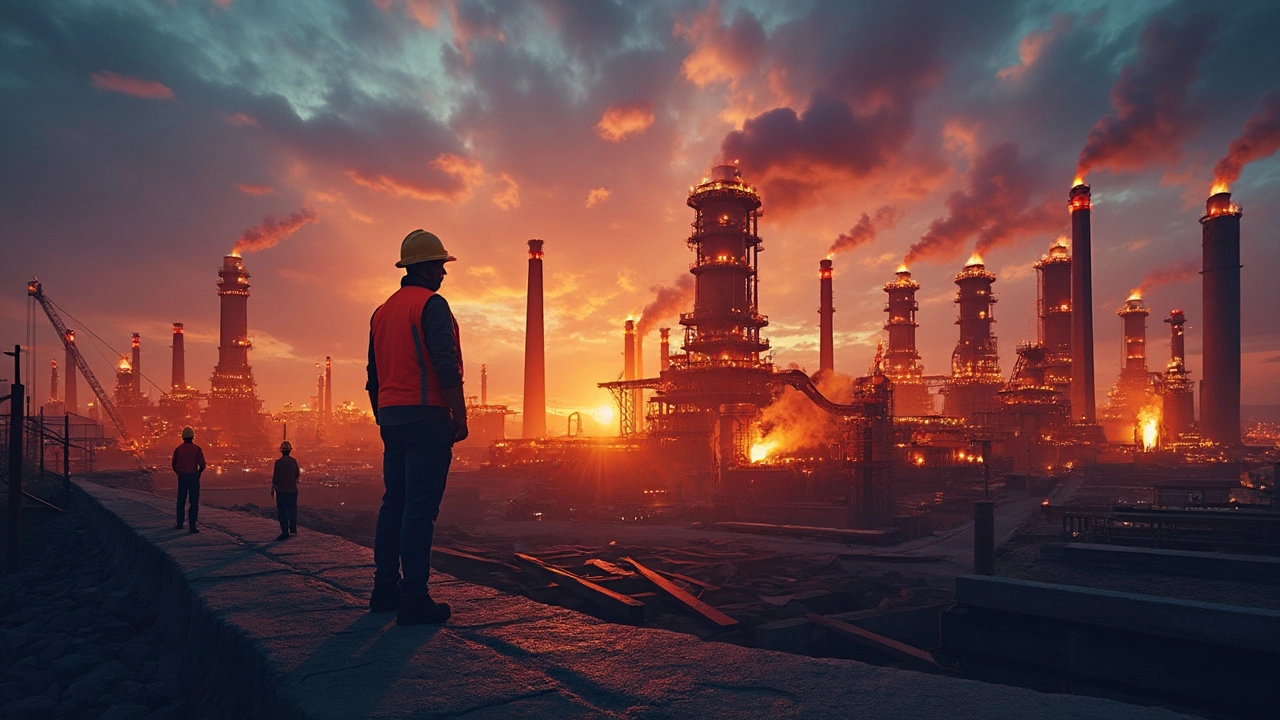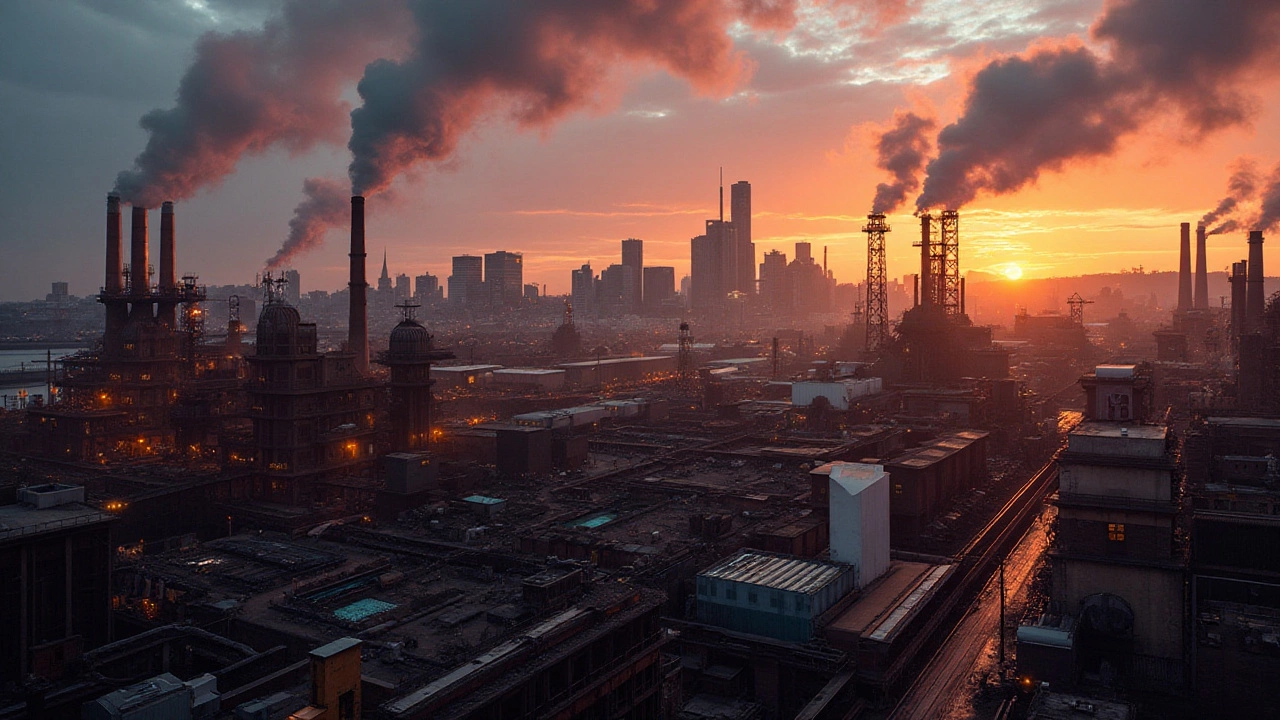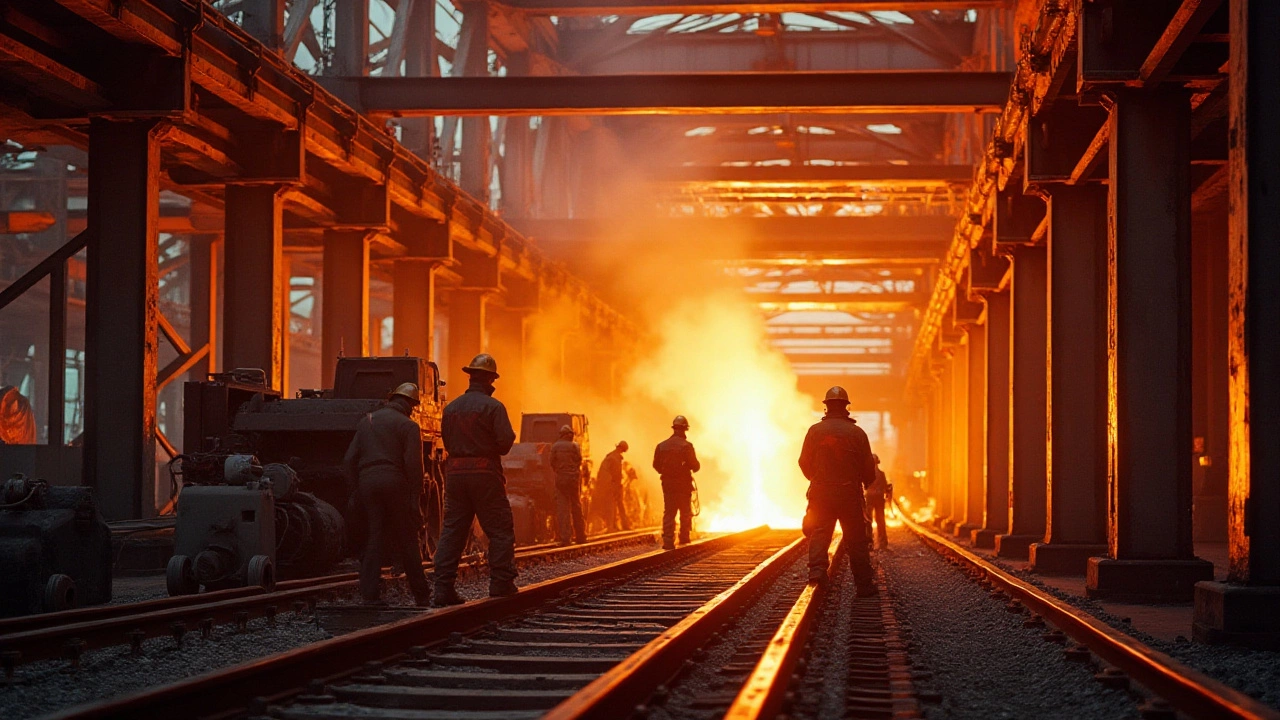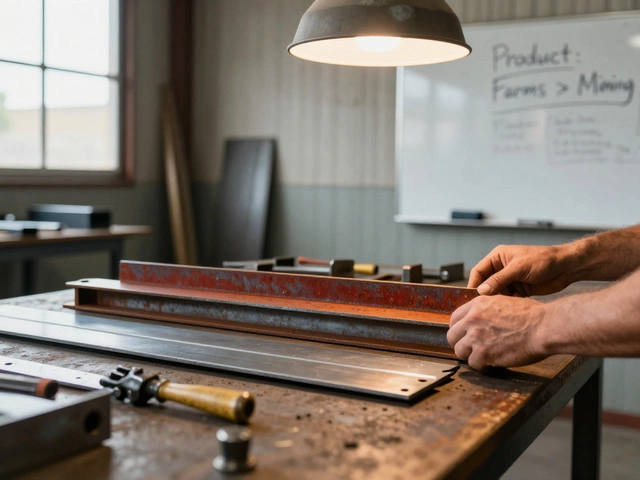Steel Manufacturing: What You Need to Know Today
Ever wondered how a steel plant turns raw iron ore into the beams that hold up skyscrapers? It all starts with a furnace, a blast of hot air, and a lot of precise timing. In this guide we break down each step so you can see the whole picture without getting lost in jargon.
Core Processes in a Modern Steel Plant
First, the raw material – iron ore, coal, and limestone – goes into the blast furnace. Here the ore melts at over 1,500°C, forming molten iron called hot metal. Next, the hot metal moves to the basic oxygen furnace (BOF) where oxygen is blown in to strip away excess carbon. The result is liquid steel ready for casting.
Once you have liquid steel, you decide how to shape it. Continuous casting solidifies the steel into slabs, blooms, or billets. Those pieces then travel to rolling mills where they are stretched, squeezed, and cooled into plates, bars, or coils. Each stage is monitored by sensors that track temperature, composition, and thickness in real time.
Key Trends Shaping the Industry in 2025
Automation is no longer a buzzword – robots now handle material handling, welding, and quality checks. This cuts errors and speeds up production, especially in high‑volume plants. At the same time, electric arc furnace (EAF) technology is gaining ground because it can melt scrap metal with far less energy than a traditional blast furnace.
Sustainability is also a big driver. Many Indian steelmakers are adopting hydrogen‑based reduction to cut carbon emissions. While the technology is still early, pilot projects show promising results and could become mainstream within the next decade.
Another trend is digital twins – virtual replicas of the plant that run simulations to optimize everything from furnace temperature to maintenance schedules. By spotting issues before they happen, factories can avoid costly downtime.
If you’re thinking about starting a steel‑related business, focus on niche markets like high‑strength automotive steel or corrosion‑resistant alloys. Those segments pay premium prices and often need specialized processing, which large integrated mills can’t always provide.
When it comes to sourcing raw material, look beyond the traditional suppliers. Recycling scrap offers a cheaper, greener feedstock, especially if you pair it with an EAF. Many mid‑size plants have built profitable models around scrap processing combined with value‑added finishing services.
Finally, keep an eye on government policies. The Indian Ministry of Steel regularly updates tariffs, export incentives, and green steel subsidies. Aligning your strategy with these programs can boost profitability and open new market doors.
Steel manufacturing may seem complex, but breaking it down into furnace, casting, and rolling makes it manageable. Stay updated on automation, sustainability, and policy shifts, and you’ll be ready to navigate the industry’s next wave of growth.
Why Doesn't the US Make Steel Anymore? The Real Story Behind American Steel Manufacturing
This article breaks down why steel manufacturing in the US isn't what it used to be. We'll look at where the plants went, what replaced them, and how global markets changed the game. You'll see how shifts in technology, costs, and international competition shaped the steel industry. If you've ever wondered what happened to the American steel jobs, you'll get some straight answers here. Expect practical insights and real-life tips for anyone interested in how stuff gets made.
Read MoreWho Owns the Biggest Steel Company? The Real Story Behind Steel Manufacturing Giants
Curious who really owns the world’s biggest steel company? This article digs into the leadership, history, and surprising facts about the steel industry’s top player. You'll get a close look at the rise of ArcelorMittal, what makes its owner tick, and how this company shapes global manufacturing. If you’re interested in steel plant operations or business empires, this read is for you. Plus, we share tips for following trends in the ever-changing steel world.
Read MoreWhat US State is Known as Steel City?
Known as 'Steel City,' Pittsburgh in Pennsylvania has a rich history of steel manufacturing. At one point, this city produced more steel than any other place in the world. The steel industry shaped its economy, culture, and skyline. Today, though manufacturing has declined, the legacy of steel is embedded in Pittsburgh’s identity.
Read MoreWhere is Steel Produced in America? A Guide to US Steel Manufacturing
The American steel industry stands as a backbone of the country's industrial and economic sectors, operating through several major regions. This informative article explores key locations where steel is produced, delving into the historic roots, modern advancements, and regional specifics. From Pittsburgh's storied legacy to the modern facilities of the Midwest, discover the diversity and depth of steel manufacturing in the United States. Learn interesting facts about how different regions contribute uniquely to the nation's steel output.
Read MoreAmerica's Leading Steel Producers: Top Companies Shaping the Industry
The United States is home to several significant steel companies that play key roles in the global steel market. This article explores the largest steel manufacturer in the U.S., providing insights into its operations and impact. We will delve into interesting facts about America’s steel producers, discuss the company’s influence on the economy, and highlight their innovative approaches to sustainable production. Readers will gain a clear understanding of how these companies shape the industry today.
Read More